Which one of the following represents displacement-time graph of two objects A and B moving with zero relative velocity?

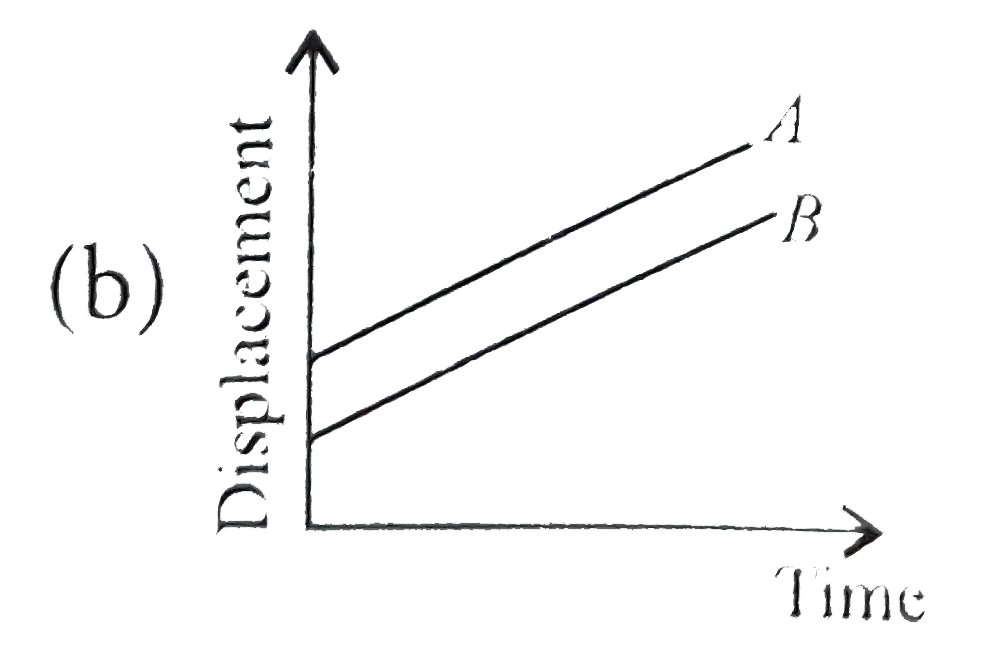

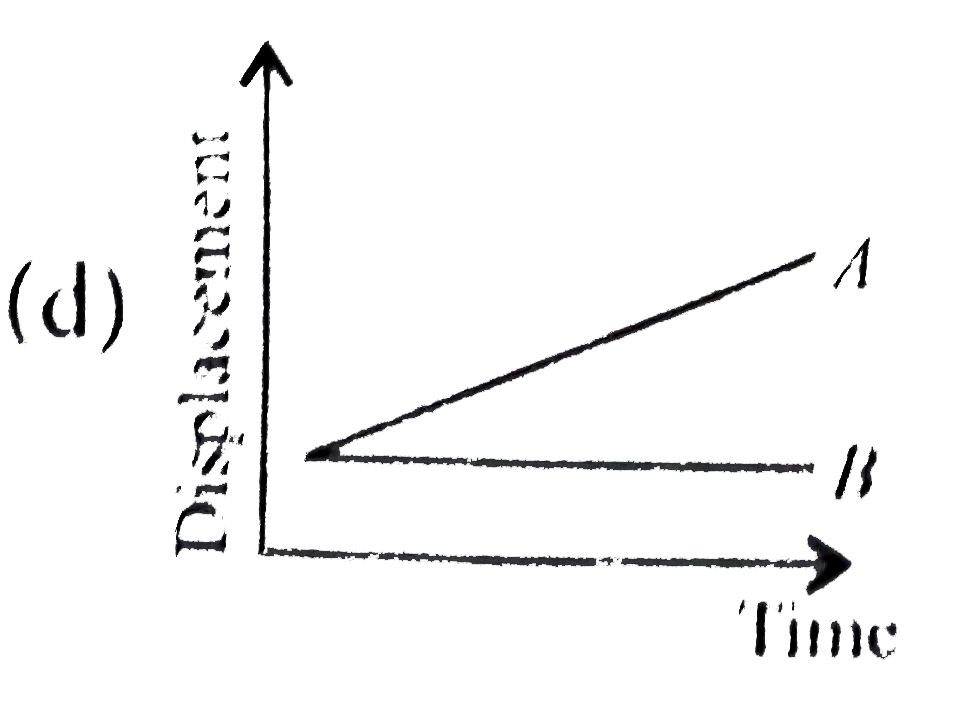
The correct Answer is:B
To solve the question regarding the displacement-time graph of two objects A and B moving with zero relative velocity, we can follow these steps:
1. Understanding Relative Velocity:
- Relative velocity is defined as the velocity of one object as observed from another object. If two objects are moving with zero relative velocity, it means they are moving at the same velocity.
2. Displacement-Time Graph Basics:
- In a displacement-time graph, the x-axis represents time, and the y-axis represents displacement from a reference point.
- The slope of the graph indicates the velocity of the object. A straight line indicates constant velocity, while a curved line indicates changing velocity.
3. Identifying Zero Relative Velocity:
- If two objects A and B have zero relative velocity, their displacement-time graphs will have the same slope. This means that both objects are moving parallel to each other in the same direction or are stationary with respect to each other.
4. Graph Characteristics:
- The graphs of A and B will either be two parallel lines (if they are moving with constant velocities) or two overlapping lines (if they are stationary or moving together).
- If the lines are parallel, they will maintain a constant distance apart, indicating that both objects are moving at the same speed.
5. Conclusion:
- Therefore, the correct representation of the displacement-time graph for two objects A and B moving with zero relative velocity will be either two overlapping lines or two parallel lines with the same slope.
Final Answer:
The displacement-time graph of two objects A and B moving with zero relative velocity will be represented by two parallel lines or overlapping lines.
- Relative velocity is defined as the velocity of one object as observed from another object. If two objects are moving with zero relative velocity, it means they are moving at the same velocity.
- In a displacement-time graph, the x-axis represents time, and the y-axis represents displacement from a reference point.
- The slope of the graph indicates the velocity of the object. A straight line indicates constant velocity, while a curved line indicates changing velocity.
- If two objects A and B have zero relative velocity, their displacement-time graphs will have the same slope. This means that both objects are moving parallel to each other in the same direction or are stationary with respect to each other.
- The graphs of A and B will either be two parallel lines (if they are moving with constant velocities) or two overlapping lines (if they are stationary or moving together).
- If the lines are parallel, they will maintain a constant distance apart, indicating that both objects are moving at the same speed.
- Therefore, the correct representation of the displacement-time graph for two objects A and B moving with zero relative velocity will be either two overlapping lines or two parallel lines with the same slope.
The displacement-time graph of two objects A and B moving with zero relative velocity will be represented by two parallel lines or overlapping lines.
Topper's Solved these Questions
- MOTION IN A STRAIGHT LINEBOOK - NCERT FINGERTIPSCHAPTER - MOTION IN A STRAIGHT LINEEXERCISE - Higher Order Thinking Skills
10 Videos
- MOTION IN A STRAIGHT LINEBOOK - NCERT FINGERTIPSCHAPTER - MOTION IN A STRAIGHT LINEEXERCISE - NCERT Exemplar
6 Videos
- MOTION IN A STRAIGHT LINEBOOK - NCERT FINGERTIPSCHAPTER - MOTION IN A STRAIGHT LINEEXERCISE - Kinematic Equations For Uniformly Accelerated Motion
32 Videos
- MOTION IN A PLANE BOOK - NCERT FINGERTIPSCHAPTER - MOTION IN A PLANE EXERCISE - Assertion And Reason
15 Videos
- OSCILLATIONS BOOK - NCERT FINGERTIPSCHAPTER - OSCILLATIONS EXERCISE - Assertion And Reason
15 Videos
Similar Questions
Knowledge Check
Which of the following position-time graphs correctly represents two moving objects A and B with zero relative velocity ?
A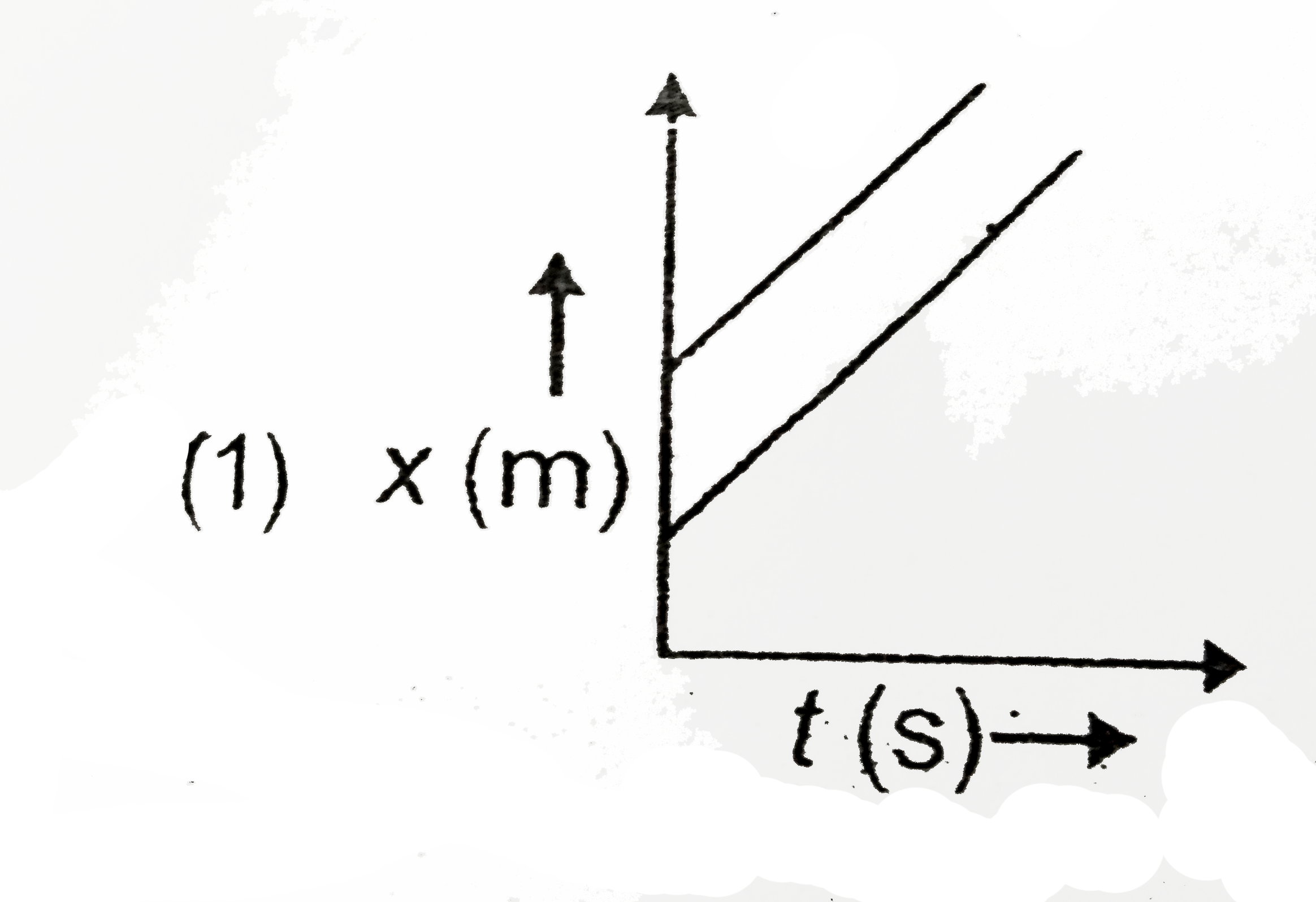 B
B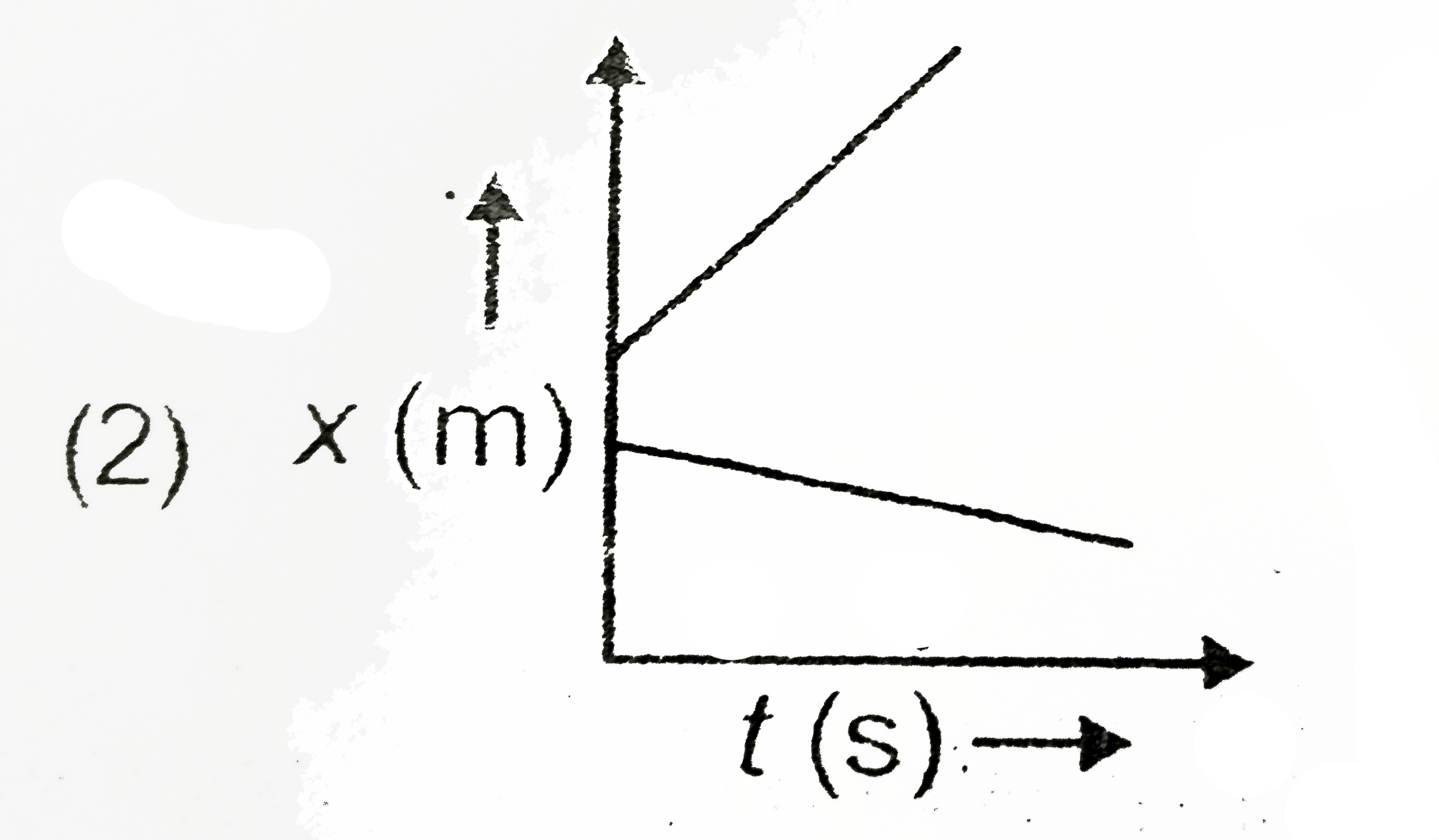 C
C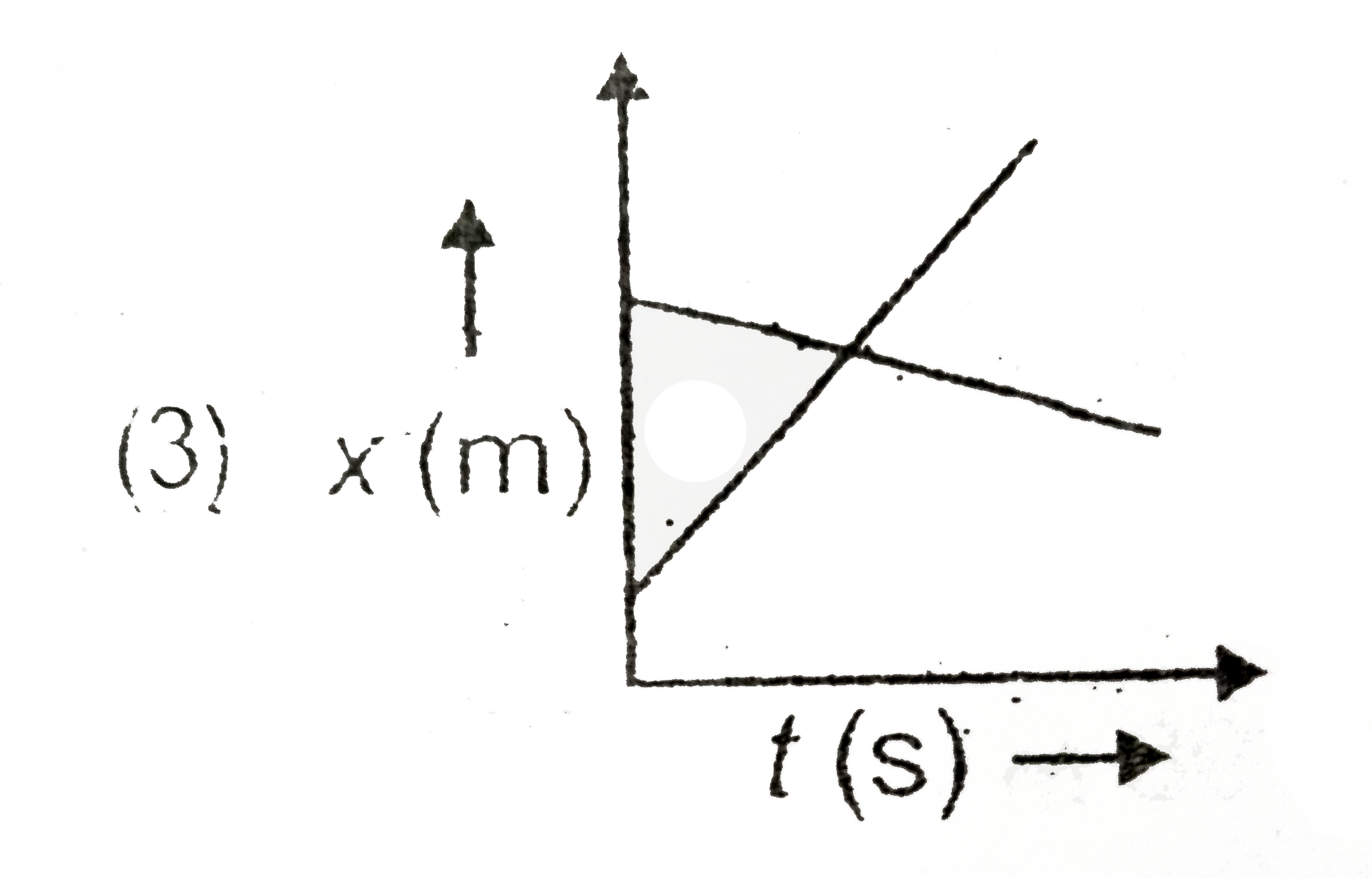 D
D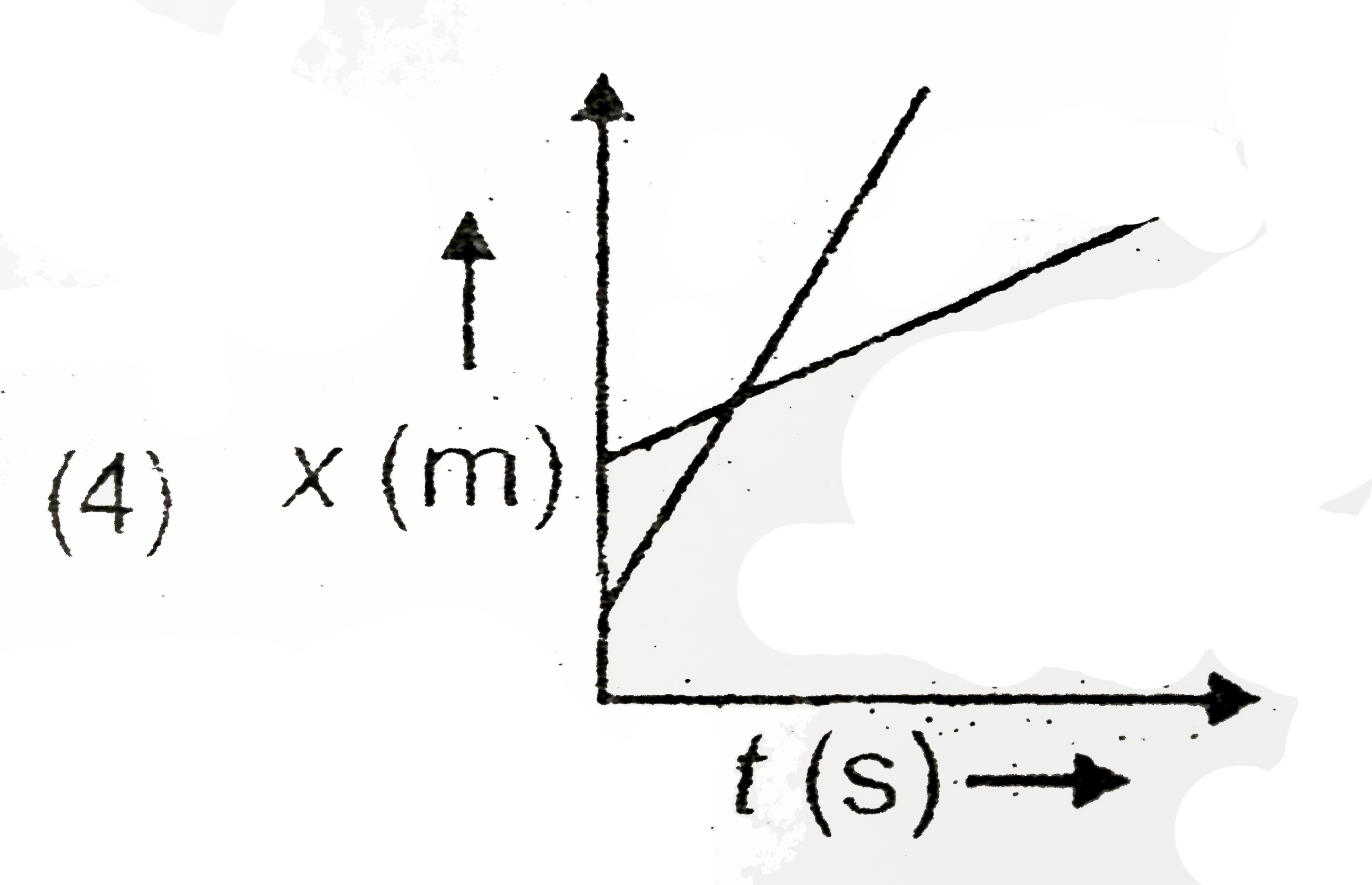
Which of the following are true ? A body having constant speed can have varying velocity.Which of the following are true? Position time graphs for two objects with zero relative velocity are parallel.Which of the following are true ? The numerical ratio of velocity to speed of an object can never be more than one.
A(i)B(ii) and(iii)CAllDNone of theseWhich of the following are true ? A body having constant speed can have varying velocity.Which of the following are true? Position time graphs for two objects with zero relative velocity are parallel.Which of the following are true ? The numerical ratio of velocity to speed of an object can never be more than one.
A(i)B(ii) and(iii)CAllDNone of these
Which of the following graphs represents the displacement (s) -time (t) graph for uniform motion ?
View SolutionFrom the following displacement-time graph find out the velocity of a moving body.
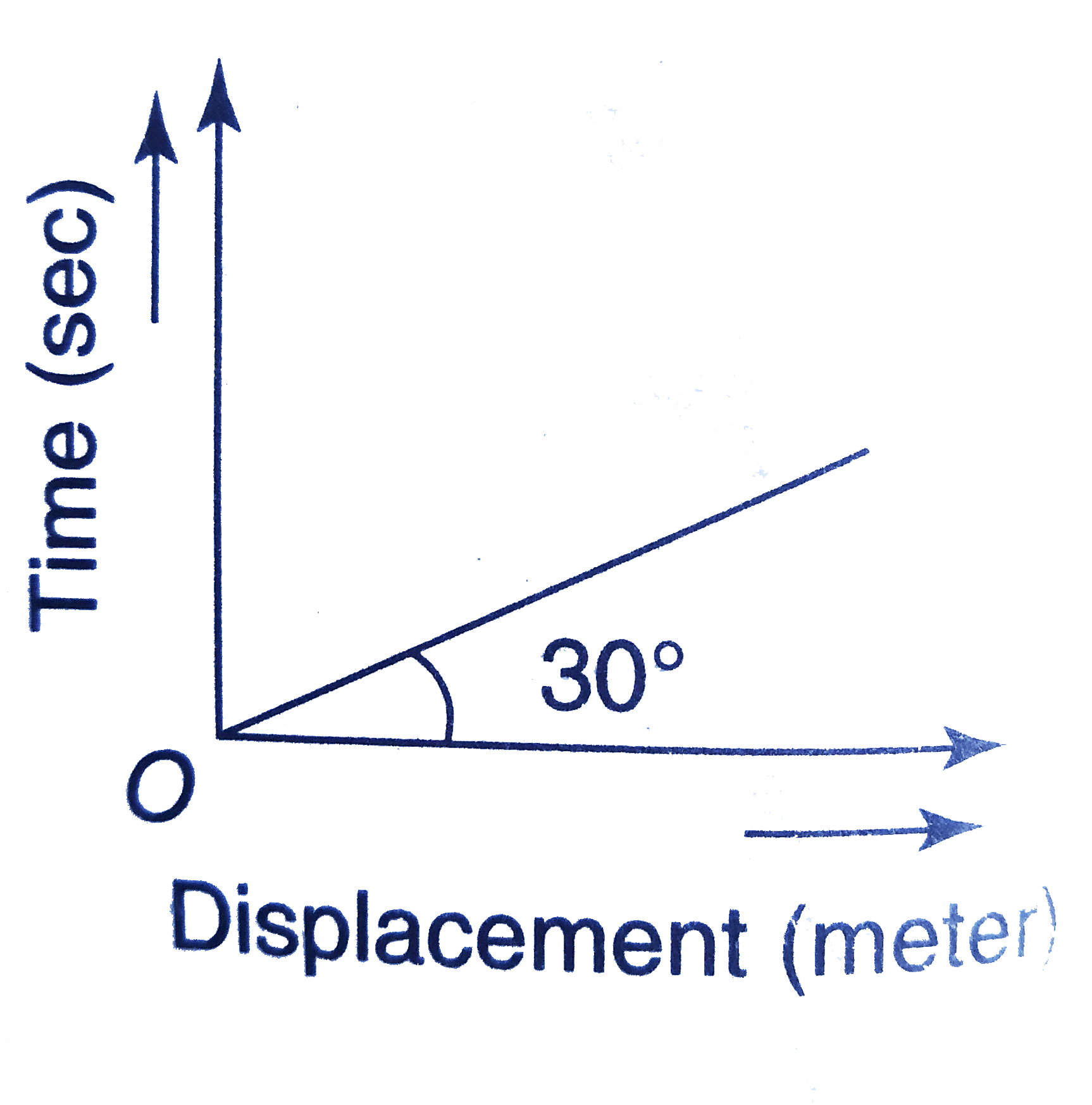
View SolutionFrom the following displacement-time graph find out the velocity of a moving body
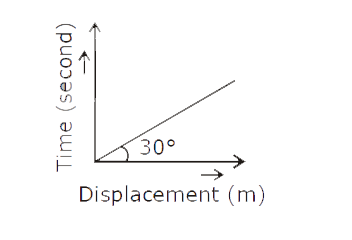
View SolutionWhich of the following graphs represents the position time-graph of a particle moving with negative velocity?
View SolutionFigure shows two displacement-time graphs of particles P1 and P2
Their relative velocity is

View Solution

